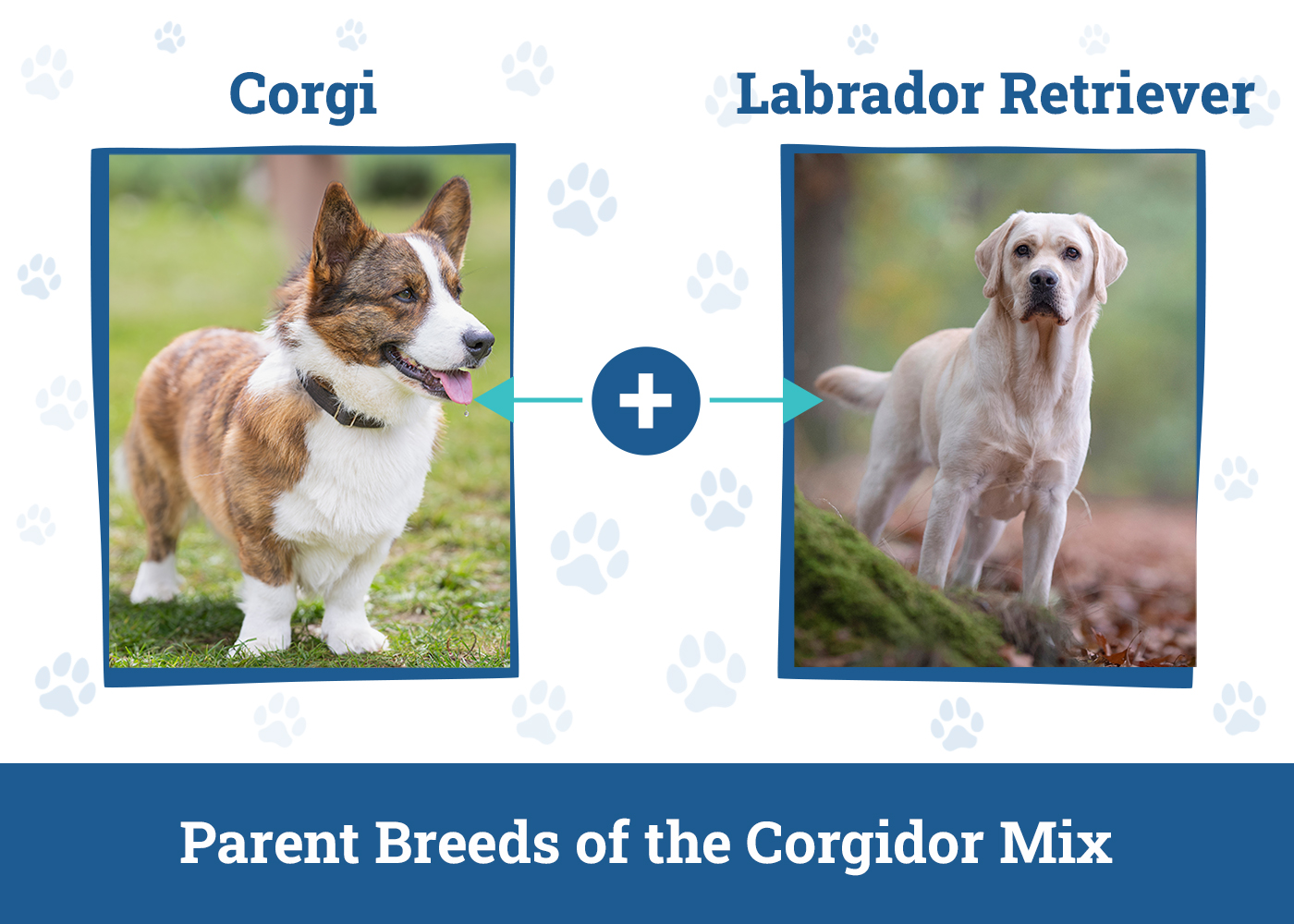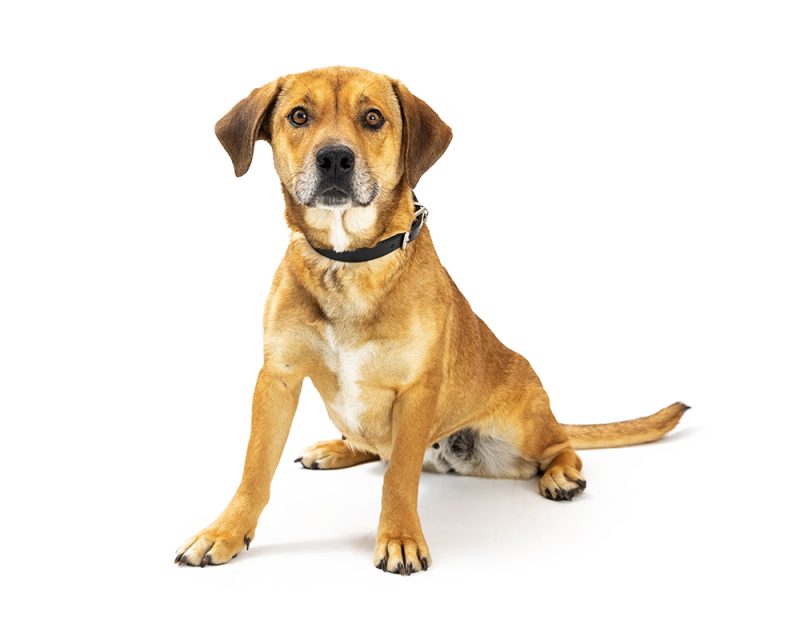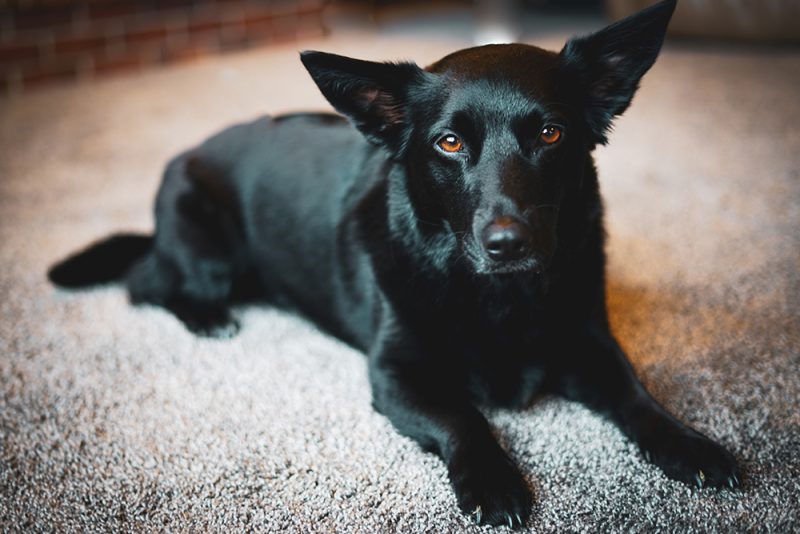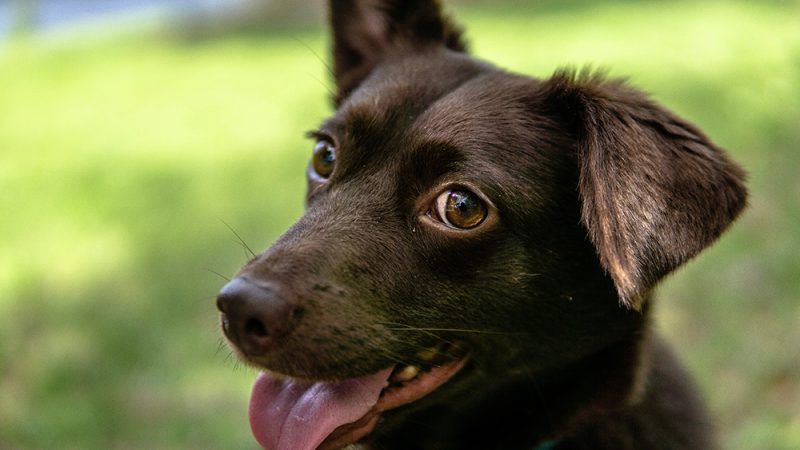Original Article: https://www.dogster.com/dog-breeds/corgidor
Click Below to Skip Ahead
The Corgidor is a mixed breed that combines the lively, working Corgi, with the doting, energetic Labrador Retriever. The resulting cross is a loyal, loving, and affectionate breed. The introduction of the Labrador can help to blunt the Corgi’s tendency for heel nipping and herding, while the combination of these two breeds means that the Corgidor should be relatively easy to train.
While they won’t usually be aggressive, they are alert and watchful, and they will bark an alert if they see anything they deem to be a potential threat.
Read on for more information about this unique mixed breed and to see whether it will be a good fit for your family and home.
Breed Overview
Height:
12–24 inches
Weight:
40–55 pounds
Lifespan:
10–13 years
Colors:
Black, tan, beige, brown, white, red
Suitable for:
Active owners looking for a lively dog
Temperament:
Loving, affectionate, guarding, patient, playful, happy
The Corgi is a skilled herder, which means that it does best when it is given jobs or tasks to perform, and it can also lead to herding behavior which can include nipping at heels. Early training can help curb this activity, and so too can the addition of the Labrador Retriever to the mix.
The Labrador Retriever is one of the most popular breeds in the world and is widely considered one of the best all-around dogs as it is suitable for owners of all ages, including those with families. Exactly which temperament your dog has will depend on whether it leans more towards the Corgi or the Labrador, as well as individual traits, and how well trained and socialized the dog is.
Corgidor Dog Breed Characteristics


Corgidor Puppies
The Corgidor is a mixed breed dog and not a purebred, which means it can be very difficult to find breeders that intentionally create this cross. However, it is worth doing your research to see if there are any litters around. Check with social media groups and contact local breeders of Corgis or Labradors. If you do find a breeder, do your research before you agree to buy or place any deposit.
Ensure they have a good reputation and visit the site so you can see the conditions in which the dogs are kept. Puppies and moms that are kept in poor conditions can suffer all kinds of illnesses and developmental problems, as well as social issues when they do go to their new homes. And while the Corgidor is known for being an outgoing and social breed, this might not be the case if it comes from an intensive puppy mill.
Because the mixed breed is not that popular, despite having two popular dogs as parent breeds, it is rare to find them in rescues and shelters, but it is worth investigating. If you have seen one already, leading to your search for more information, ask as many questions as possible about the dog and its history.
The shelter may have limited information available, and there is no guarantee that the information provided will be accurate, but you should be able to get a clear picture of whether the dog gets on with other dogs and potentially even cats. And the shelter should know of any immediate health problems.
Whatever the source, if you do get a Corgidor puppy, ensure you start training and socialization straight away.


Corgidor Dog Breed Origin & History
The Corgidor is a mixed breed, which means it doesn’t have much history of note.
However, we do know that the Corgi was first bred in Wales, UK, as a herding dog before becoming a popular companion dog breed that was especially popular with Queen Elizabeth II. The Labrador Retriever was bred as a retriever, in Scotland, and got its name from the dogs that were used to create the breed, as they came from the Labrador region of Newfoundland.
Although accidental breeding may have occurred, there are no known intentional breeding programs for the Corgidor.



Temperament & Intelligence of the Corgidor Dog Breed 🧠
The Corgidor combines two popular companion breeds. The Corgi is a former herding dog and, even as a companion dog, it benefits from being given jobs or tasks to perform. These help provide physical exercise while also offering mental stimulation, both of which can help prevent the dog from picking up bad habits and displaying unwanted behaviors.
The breed does have high energy levels and requires moderate to high levels of exercise, but as long as you can provide this exercise, it can do well living in an apartment. However, the breed will thrive when given plenty of outdoor space to run around and play.
The Corgidor will usually get along with strangers, as well as family members, but it is alert and will let the family know if it senses or sees any kind of danger, making it a good guarding dog. However, the breed is not considered aggressive and is more likely to befriend visitors once it gets the chance to meet them.
The Corgi and the Labrador get along with other dogs and there is no reason to believe that the mixed breed will not also get along with other dogs. It has a low prey drive, which means it can live with cats, with thoughtful and gradual introductions, and it shouldn’t be prone to running off.
Are These Dogs Good for Families? 👪
Corgidors are friendly, loving, and affectionate dogs that will get along with all family members. Although the Corgi, specifically, tends to nip at heels as a method of herding, and this can be a problem with very small children, early training and the Labrador’s affectionate nature means that this may not be a problem with your Corgidor.
Do start training early to discourage this behavior, or you might find that the Corgidor tries to herd family members, other pets, and visitors. The breed is hardy and is quite a robust dog, while also being understanding and patient, so it will do well looking after children and will not react to rough play between children.

Does This Breed Get Along With Other Pets? 🐶 😽
These lively dogs are not known to be aggressive and will usually get along with other animals. They are friendly with dogs outside their home and can be introduced to sibling dogs. They do not have a high prey drive, either, which means they can get along with cats, although they can be quite playful, which may deter some cats, so they need to be taught good manners and how to be respectful around smaller animals.
No dog should ever be left alone with small animals when they are out of their enclosure because the temptation can be too much and even if the dog is only playing, they can cause serious injury.


Things to Know When Owning a Corgidor
Below, you will find details about the breed’s requirements so you can determine whether it will make the right pet for you.
Food & Diet Requirements 🦴
The energetic Corgidor does have quite an appetite. Although you don’t necessarily need to feed a special diet, you should feed around three cups of dry kibble a day, split over two or even three meals. You may need to feed a little more or less depending on the dog’s current weight, target weight, and exercise levels.
If you prefer to feed canned food, follow the guidelines on the food, making allowances for current and target weight. And, if your vet has recommended a specific food or has advised feeding more or less, always follow these guidelines over any others. You can use treats to help with training, or just as a little extra, but these should not constitute more than 10% of your dog’s daily calorie intake.
You will need to reduce the amount of food you give at meals according to the total treats you give. Always ensure you provide fresh drinking water. Hydration is very important to all dogs, and even if your dog has canned food, the moisture in this is not enough alone.

Exercise 🐕
These are high-energy dogs that need plenty of daily exercise to ensure they stay fit and healthy. Provide a minimum of 90 minutes of walks per day, and supplement this with additional forms of exercise if possible. Corgidors are skilled herds so can benefit from herding games and competitions, while Labrador Retrievers can perform a wide variety of tasks, hence their use as service dogs in a wide variety of roles.
The dog can do well in agility but will usually benefit from something more energetic. Flyball is a relatively easy and common canine sport, and it can help build a bond between the two of you while also providing a good amount of exercise for your pup. Canicross is another possibility, although it does take time and training to ensure you and your dog can compete safely.
Training 🎾
Training should begin as soon as you get your new Corgidor home, and early training efforts will concentrate on stopping the dog from nipping at heels.
The Corgidor’s Labrador heritage means this breed can be trained to perform most tasks. Labradors are used as guide dogs and in search and rescue, bomb and drug detection, and for a host of other service roles, showing their intelligence, trainability, and adaptability.
As well as training, you should start socializing your dog as early as possible. Socialization introduces your dog to new situations and desensitizes them. With regular socialization, your dog won’t get stressed when faced with something new and it will be accepting of new people and other animals.
A good way to embark on early training and socialization is by visiting puppy classes. There will be other dogs and people. You will learn some basic commands as well as how to train your dog, and you can do so in an environment where some misbehavior is acceptable and where you won’t be judged for your young dog’s antics.
However, you will need to continue your efforts outside puppy classes. Use daily walks, take your dog to puppy parks, and on new walks. Introduce them to different groups of people and ensure they experience traffic, cyclists, sirens, and other unusual occurrences.
Grooming ✂️
The Corgidor has a short coat that protects them, especially during cold weather. While this short coat doesn’t require too much brushing, it will shed quite heavily during shedding season, and daily brushing will benefit you both at these times. It gets rid of dead hairs that can become uncomfortable, and it enables you to get rid of the hairs in a more controlled manner. You’ll only need to bathe your Corgidor every 4 to 6 weeks with good dog shampoo.
Dental hygiene is extremely important but often overlooked by owners. Brush your dog’s teeth at least three times a week, if not daily, and have your vet check your dog’s teeth and gums at least once a year when you visit for a checkup.
Trim nails when they start to click on hard surfaces or when they become noticeably longer. This usually means trimming every 2 or 3 months.

Health and Conditions ❤️
The Corgidor is considered a generally healthy breed, but it can be prone to certain health conditions. In particular, it can suffer from hip dysplasia, which is when the bones around the hip joint are not situated properly. It can be painful and may cause lameness. It can also lead to arthritis later in the dog’s life.
Conditions to look out for can be found below, and if you see any signs of these, you should take your dog to be checked over by the vet who will be able to advise on the best course of action.
- Allergies
- Bladder Stones
- Cataracts
- Patellar Luxation
- Skin Issues
- Intervertebral Disc Disease
- Glaucoma
- Hip Dysplasia
- Von Willebrand’s Disease


Male vs Female
As is true of most breeds, male Corgidors will typically grow to be a little heavier and taller than females. Although individual traits are more likely to determine the character of your dog than its gender, there are some reports of male dogs being more playful and more affectionate, but also being rougher and more prone to wandering.
Females can be prone to mood swings but are usually more level-headed and less demanding than males.


3 Little-Known Facts About the Corgidor Dog Breed
1. Corgis Are Said to Be Enchanted
According to Welsh legends, Corgis were used to pull fairy carriages and are said to have worked closely with fairies. They still have saddle markings over their back which, according to legend, were given to the Corgis when they pulled the carriages.
2. Labradors Love Toys
Labradors are described as having oral fixations. Their history as retrievers means they love to carry things in their mouths. With good training, this means they will love their toys.
But, if you miss out on that early training, it could mean a Labrador carrying everything it sees, regardless of who it belongs to.
3. Corgidors Make Good Guard Dogs
Although the Corgidor’s affectionate and understanding nature means it is rarely aggressive, the breed can still make a good guard dog. It will usually bark an alert when it sees strangers or when it senses any kind of potential danger.


Final Thoughts
The Corgidor is a medium-sized dog that is energetic, playful, and affectionate. They will usually get along with all people, including young children in the house, although will benefit from early training to help discourage heeling and herding behavior, and to teach the Labrador in the breed that it can’t pick up kids’ toys and everything else it sees in the house.
Owners do need to provide plenty of exercise, each day, but grooming requirements are quite minimal, and this mixed breed is considered a good dog for most families and owners that have the time to dedicate to it.
Featured Image Credit: Fotopoema de Gabriela, Shutterstock
Source: Dogster












